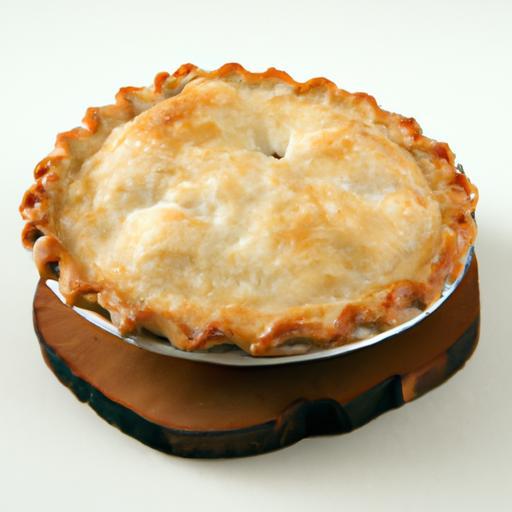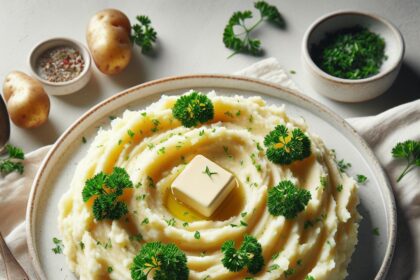There’s something undeniably magical about a slice of pie-flaky crust, luscious filling, and that warm, comforting embrace of flavors that feels like a hug from the inside. But what happens when you’ve saved a slice for later and the moment to enjoy it again arrives? Reheating pie might sound simple, but to truly recapture that just-baked perfection, a little know-how goes a long way. In this article, we’ll explore the art and science of bringing your leftover slice back to life, ensuring it’s perfectly warm, irresistibly tender, and every bit as delightful as when it first came out of the oven. Get ready to elevate your pie game-one slice at a time.
Why Oven Reheating Preserves Pie Flakiness Like No Other
Perfectly warm slices of pie are a joy unmatched, especially when that coveted flaky crust remains crisp and inviting after reheating. Oven reheating is the trusted method to achieve this magic. Unlike microwaves that steam and soften the crust, the dry, even heat from the oven gently revives the pie’s texture without sacrificing moisture inside.
To create an ideal balance, preheat your oven to a moderate temperature, generally between 300°F and 350°F (150°C to 175°C). This range is optimal because it heats through the filling evenly without burning the delicate crust. For fruit-filled pies, 325°F (165°C) for 15-20 minutes often works best, while cream and custard pies require a gentler approach at 300°F for about 10-15 minutes to avoid curdling or drying out.
Always wrap the pie loosely with aluminum foil to prevent excessive browning while locking in heat. This subtle barrier will protect the outer edge yet allow the crust’s crispness to reemerge.
Choosing the Right Temperature and Timing for Each Pie Type
Each pie type calls for nuanced reheating:
- Fruit pies: These robust fillings tolerate higher temps (350°F), but keep a close eye to avoid burning sugar edges.
- Custard and cream pies: Sensitive to heat, stick to 300°F and shorter reheating times to maintain a silky, smooth texture.
- Nut pies (pecan, walnut): Use 325°F, reheating just long enough to warm and restore crunch without drying out.
- Pot pies: These savory treats benefit from a hot oven (375°F) to crisp the puff pastry, typically for 15-20 minutes.
Tips for Retaining Moisture and Avoiding a Soggy Crust
To avoid a soggy bottom crust – a common reheating woe – place the pie slice on a preheated baking sheet or pizza stone. The direct contact will help brown the base nicely. If the filling is extra juicy, gently pat the slice with a paper towel before reheating to absorb surface moisture.
Adding a small oven-safe dish of water beneath the pie during reheating will create a bit of steam, preserving moisture within the filling without compromising crust texture. Just be sure the steam source doesn’t touch the pie itself.
Creative Fixes for Microwave Reheating Without Losing Freshness
Microwaves can be pie’s enemy but sometimes are necessary for their speed. Use these tricks to come closer to that fresh-from-the-oven experience:
- Layer a paper towel: Place one under your pie slice to absorb moisture and minimize sogginess.
- Use low power settings: Reheat at 50-60% power in short 20-30 second bursts, checking frequently to avoid overheating.
- Combine with a crisping plate: If available, use a microwave crisper pan or finish your reheating with a 2-3 minute toaster oven crisp to revive the crust texture.
- Create steam balance: Place a microwave-safe cup of water alongside your pie slice during reheating to regulate moisture.
With these techniques, you can reheat pie slices while preserving their flaky charm-turning every bite into a comfort-filled celebration.
Prep and Cook Time
- Prep Time: 2 minutes (includes preheating oven)
- Cook Time: 10-20 minutes depending on pie type
- Total Time: 12-22 minutes
Yield
1 perfectly reheated slice (adjust as needed for full pie)
Difficulty Level
Easy
Ingredients
- 1 slice of your favorite pie (fruit, custard, cream, or nut)
- Aluminum foil, for loose tenting
- Optional: water in a small oven-safe dish to retain moisture
- Optional: paper towel (for microwave reheating)
Instructions
- Preheat your oven to 325°F (165°C), or adjust based on the pie type as described above.
- Place the pie slice on a preheated baking sheet or pizza stone to crisp the bottom crust.
- Loosely tent the pie with aluminum foil to prevent crust burn while retaining heat.
- If using steam, position a small oven-safe dish with water on a lower rack beneath the pie.
- Reheat for 10-20 minutes depending on the pie type – monitor closely for custard pies to avoid overcooking.
- Remove from oven, let rest for 2 minutes before serving to settle the filling.
- For microwave reheating, place slice on a microwave-safe plate lined with a paper towel, heat at 50% power in 20-30 second bursts, checking after each interval.
- Optionally finish microwaved slice in a toaster oven for 2-3 minutes to regain flaky crust texture.
Chef’s Notes
- Reheating times vary significantly by slice thickness and filling moisture; always keep an eye on your pie during warm-up.
- If your pie filling is overly juicy, you can briefly chill the slice before reheating to solidify it and avoid soggy crusts.
- For make-ahead convenience, store pie slices in an airtight container in the refrigerator; bring to room temperature briefly before reheating.
- Substitute aluminum foil with a silicone baking mat cover to minimize waste and maintain similar heat control.
- Pair custard and cream pies with gentle warming to avoid texture breakdown; avoiding direct high heat is key.
Serving Suggestions
- Serve warm pie with a scoop of vanilla bean ice cream or a dollop of freshly whipped cream for luscious contrast.
- Garnish fruit pies with a sprinkle of cinnamon or freshly chopped mint for added aroma and color.
- Nut pies pair beautifully with a drizzle of caramel or a light dusting of powdered sugar to elevate presentation.
- Savory pot pies benefit from a fresh side salad dressed in bright vinaigrette to balance richness.

| Nutrient | Amount per Slice |
|---|---|
| Calories | 300-450 kcal (varies by type) |
| Protein | 3-6 g |
| Carbohydrates | 40-60 g |
| Fat | 15-25 g |
For more in-depth tips on pie preparation and creative serving ideas, explore our related article Ultimate Guide to Making Pies. To understand the science behind reheating breads and pastries, check out this expert resource.
Q&A
Q&A: Perfectly Warm – The Best Way to Reheat a Slice of Pie
Q1: Why does reheating pie matter? Can’t I just microwave it?
Absolutely, you can microwave it, but there’s an art (and a science) to reheating pie perfectly. Microwaving alone often leaves you with a soggy crust or a rubbery texture-definitely not the nostalgic comfort you’re craving. The goal is to keep the crust crisp and the filling warm and luscious, just like the first time you indulged.
Q2: What’s the ideal temperature to reheat pie?
Think gentle warmth, not a blazing inferno! Around 350°F (175°C) in the oven is your golden number. This temperature heats the pie evenly, allowing the filling to become beautifully melty while keeping the crust flaky and crisp-not burnt or dry.
Q3: Is reheating pie in the oven really better than the microwave?
De nada, amigo! The oven’s even heating gradually revives the pie’s textures, maintaining that perfect balance between a tender filling and a flaky crust. The microwave’s fast heat tends to steam the pastry inside its shell, which can make it limp and unappetizing. However, if you’re in a rush, a quick zap followed by a brief oven time can work wonders.
Q4: Should I cover the pie when reheating?
It depends! For fruit pies, a loose tent of aluminum foil can prevent the crust’s edges from burning while allowing steam to escape, keeping the filling moist but the crust crisp. For cream or custard pies, it’s best to avoid the oven altogether and choose a gentle warming method, like a warm plate or a low-temperature microwave, to preserve the delicate texture.
Q5: Can I reheat all types of pie the same way?
Great question! Fruit pies and savory pies love the oven method, embracing the heat evenly for that perfect bite. Cream, custard, or chiffon pies prefer gentler warming, often best served chilled or just slightly warmed. Always consider the filling’s texture and moisture before deciding.
Q6: Any tips to make reheated pie taste like fresh-baked?
Yes! Adding a small pat of butter on the crust before heating can enhance flavor and help crispiness. For fruit pies, try a quick broil at the end of reheating for a golden finish-watch closely to avoid burning! And never underestimate the magic of a scoop of ice cream or a dollop of whipped cream alongside your slice.
Q7: How long should I reheat a slice of pie?
Typically, about 15-20 minutes at 350°F (175°C) does the trick for a single slice. If you’re reheating an entire pie, extend the time to about 25-30 minutes. Keep an eye on the crust, and adjust for your oven’s quirks. If microwaving, start with 30 seconds to 1 minute and check frequently.
Q8: Can I freeze pie and then reheat it later?
Absolutely! Many pies freeze beautifully. When you’re ready, thaw overnight in the fridge and then reheat using the oven method for best results. This helps retain moisture and texture, ensuring your pie tastes almost as divine as the day it was baked.
Reheating pie is less about rushing and more about reviving a moment of pure delight. With the right temperature, timing, and a few tricks up your sleeve, your leftover slice can be just as irresistible as the first bite-warm, flaky, and filled with smiles. Happy pie warming!
The Way Forward
As the comforting aroma of a perfectly warmed slice of pie fills your kitchen, you’ll know that reheating isn’t just about temperature-it’s about preserving that tender crust and melty filling, piece by piece. Whether you choose the gentle embrace of the oven or the quick magic of a microwave with a damp paper towel, the secret lies in patience and care. So next time that leftover slice beckons, remember these tips and savor every forkful as if it were freshly baked. Because when it comes to pie, perfection isn’t just in the making-it’s in the warming.








